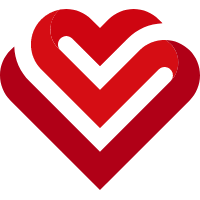
Diet in anaemia - what to eat to get back to full health? Sample menu
Anemia is one of the most common diseases resulting from nutritional deficiencies. The way to get out of this disorder is to use the right diet in the first place. So what to eat on a diet with anemia?
ANEMIA - CAUSES
Anemia, otherwise known as anemia, is a blood disorder resulting from an abnormal number of red blood cells (erythrocytes) or too little hemoglobin in these blood cells. Hemoglobin is responsible for binding oxygen and transporting it throughout the human body to all cells.
A common cause of anemia are nutritional deficiencies, mainly a deficiency of iron or vitamin B12 and folic acid. Other causes of anemia include: high blood loss, shortening of the lifespan of erythrocytes, loss of stem cells responsible for the development of erythrocytes.
SYMPTOMS OF ANEMIA
Symptoms of anemia result from less oxygenation of tissues and organs, which impairs their functioning. A person with anemia feels increased fatigue and gets tired quickly during physical exertion. There are headaches and dizziness, pale skin and mucous membranes. Anemia can also be accompanied by shortness of breath and increased heart rate. There is a deterioration of concentration, immunity and the condition of the skin, hair and nails.
WHAT TO EAT ON ANEMIA DIET?
Diet in anemia resulting from iron deficiency should be rich in ingredients that contain large amounts of this element and in products that increase its bioavailability. At the same time, products that reduce its absorption should be limited.
There are two forms of iron in food products:
heme iron, derived from animal products, such as: meat (especially red meat), offal, egg yolks, fish,
non-heme iron, derived from plant products, good sources of which are wholegrain cereal products, dry legumes, some vegetables (e.g. parsley, Swiss chard, kale), plant sprouts, nuts and seeds.
Heme and non-heme iron differ not only in their source of occurrence. The most important difference is their bioavailability. Non-heme iron is absorbed in a smaller amount than heme iron and it is more difficult to meet the demand from plant foods. For this reason, it is worth reaching for a variety of products that are a source of iron.
Diet with anemia should also include products rich in vitamin C (present in fruits and vegetables) and lactic acid (found in fermented products). On the other hand, in meals containing iron, products with a large amount of anti-nutritional compounds (e.g. oxalates, phytates) that reduce the absorption of iron should be limited. These substances are naturally present in cereal products, legumes and some vegetables.
DIET FOR ANEMIA IN THE ELDERLY
A greater challenge may be to create a menu on a diet for anemia in the elderly. With age, the work of the digestive tract and other systems deteriorates. Consumption of hard-to-digest products, such as legumes, fatty meats, offal, wholegrain cereal products or some vegetables can cause abdominal pain, bloating and diarrhea. In such situations, it is necessary to take an individual approach and choose easily digestible products containing iron, e.g. lean meats, beets, green leafy vegetables in smaller amounts, or soft-boiled eggs.
DIET IN ANEMIA - MENU
Breakfast: cottage cheese and sardine paste, with bread and pickled cucumber.
2nd breakfast: Kefir cocktail with parsley, orange and dried dates.
Lunch: Botwinka soup. Beef stew with buckwheat and Chinese cabbage salad.
Dinner: Salad with kale, white beans and tomatoes.
ANEMIA AND THE VEGAN DIET
You don't eat meat and you're worried about getting enough iron? A properly composed diet allows you to cover the demand for all nutrients. It is worth asking a specialist for help in choosing a diet. Nutritionists of the Sofra Health Institute will make sure that the diet during your stay at our Center meets the needs of your body. In addition, during dietary consultations, you will learn what a daily diet should look like to maintain health and proper body weight.



